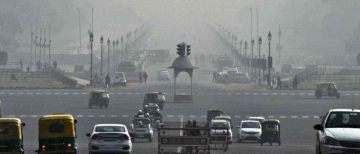On January 7, 2025, a powerful earthquake struck the Tibet Autonomous Region of China, near the border with Nepal, causing significant destruction and loss of life. The U.S. Geological Survey (USGS) reported the quake's magnitude as 7.1, with its epicenter located in Dingri County, Xigaze City, at a shallow depth of approximately 10 kilometers (6 miles).

Impact and Casualties
The earthquake resulted in at least 32 fatalities and 38 injuries, according to China's state-run Xinhua News Agency.
Many buildings near the epicenter collapsed, exacerbating the humanitarian crisis in this remote, high-altitude region. The affected area, situated at an average elevation of about 4,200 meters (13,800 feet), includes several small communities within a 5-kilometer (3-mile) radius of the epicenter. At least 95 people were reported killed, and 130 injured on the Tibetan side, according to China’s state-run television six hours after the quake. No casualties were reported from other regions.
Geological Context
This seismic event occurred along the collision zone between the Indian and Eurasian tectonic plates, a region notorious for generating significant uplifts in the Himalayan mountains. Historically, this area has experienced multiple earthquakes of magnitude 6 or higher over the past century, underscoring its geological volatility.
Regional Effects
The tremors were felt beyond China's borders, notably in Nepal's capital, Kathmandu, where residents were awakened and fled their homes in alarm. Despite the widespread shaking, there were no immediate reports of casualties or significant damage in Nepal.
:max_bytes(150000):strip_icc():focal(749x0:751x2):format(webp)/japan-quake-711-08082024-84d33b9166ef43e48e963674e8b5027b.jpg)
Additionally, the quake's effects reached parts of India, including the state of Bihar, though no injuries were reported there.
Emergency Response
In the immediate aftermath, Chinese authorities dispatched rescue teams to the affected areas to assess the damage and provide aid to survivors. The remote and rugged terrain, coupled with subzero temperatures—forecasted to drop to minus 18 degrees Celsius (0 degrees Fahrenheit) overnight—pose significant challenges to relief efforts.
Historical Parallels
This earthquake serves as a stark reminder of the region's seismic vulnerability. In 2015, a devastating 7.8-magnitude earthquake struck Nepal, resulting in nearly 9,000 deaths and over 22,000 injuries, with extensive infrastructural damage. The Himalayas' complex tectonic activity continues to pose a persistent threat to populations in both China and Nepal.
Conclusion
The January 7 earthquake highlights the ongoing seismic risks in the Himalayan region, emphasizing the need for robust disaster preparedness and resilient infrastructure. As rescue operations continue, the immediate focus remains on providing relief to the affected populations and mitigating further risks posed by potential aftershocks and harsh weather conditions.
With inputs from agencies
Image Source: Multiple agencies
© Copyright 2024. All Rights Reserved Powered by Vygr Media.
























